Friday degustation: amuse bouche edition
Free or not free, that is the question
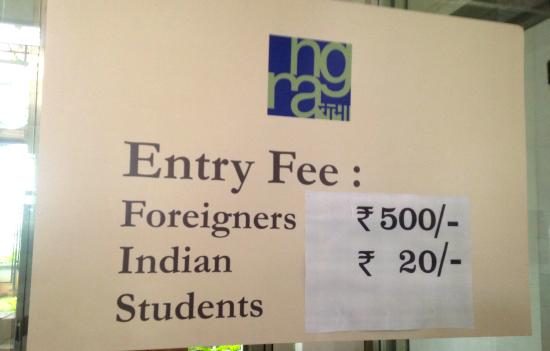
It seems completely counter-intuitive yet there’s a mounting argument that public museums and galleries should start charging entry fees. The argument goes that charging money at the door is a more effective way of keeping smaller galleries and museums open who would be otherwise forced [and as some in the UK have already done] to sell antiquities and major works in regional collections to keep operating costs under control. Contrarian art critic Jonathan Jones recently made the case in The UK Guardian [>] “Locally and nationally, charging entry can be a rational aid to museum funding. It’s one of those areas where benevolent “correct” attitudes contradict themselves. At the National Gallery, industrial action is dragging on. Low pay is on of the issues here […] But more money means more to pay staff, right? So maybe an entrance fee could help in getting justice for all museum workers. It might also make our exhibition culture a bit more relaxed. Because Britain’s big London galleries as well as regional museums are mostly free, they have to generate income from exhibitions – for which they charge plenty. This drives the “blockbuster” obsession that many people are unhappy about. It means shows on Rembrandt or Pompeii have to be crowd-pullers and money-spinners with huge publicity machines.”
Naturally Jones, being English, thinks that free entry to museums is something the English came up with, whereas in Australia most major museums only charge entry for special exhibitions and other curated shows with large staging costs. MONA in Hobart proudly boasts of letting locals in for free while charging accursed intestate and international tourists top dollar to ogle the private collection of a multi-millionaire. In America, however, charging an entry fee is standard practice for everything from the Guggenheim to the local history museum. Indeed, getting free entry to a major museum is newsworthy, such as the recent announcement that Los Angeles’ Museum of Contemporary Art will now, like the nearby Hammer and Broad galleries, is now free entry, thanks to a generous $10 million donation [>] “The Museum of Contemporary Art in Los Angeles has decided to go free. The museum announced this weekend that it would no longer require a general admissions fee, although it will still charge for entry to special exhibitions. The new policy, which will go into effect “as soon as possible,” according to the museum, is made possible by a $10 million donation by the president of the museum’s board, Carolyn Clark Powers. General adult admission to the museum currently costs $15. A total of $1.3 million in revenue—roughly seven percent of MOCA’s annual budget—came from ticket sales last year. Powers’ donation will cover the next five years […] While the Metropolitan Museum of Art in New York recent;y enacted a a mandatory ticket fee for out-of-towners, MOCA is one of several Southern California museums to go free in an effort to expand audience.”
Remembering Tiananmen Square
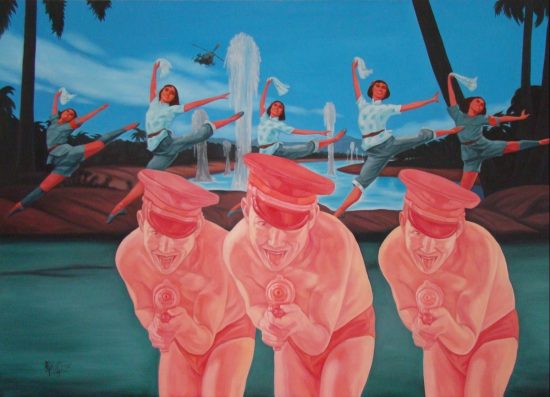
2019 seems to be a year of anniversaries. Among them is the 30th anniversary of the Tiananmen Square Massacre of 1989, otherwise known as the ‘June 4 Incident’. The murder of peaceful protestors by government troops was the premature end of a grass-roots uprising of students and workers wanting to see an end to authoritarian rule and opening up to the kinds of freedoms that were occurring in Eastern Europe in the last days of the Cold War. Sadly, it was not to be, and the fallout of the event saw many Chinese artists either driven underground, or overseas. One such artist is the ‘Central Coast’s own’ Guo Jian, who spoke to artsy.net in an article that surveys a number of now expatriate Chinese artists [>] “The short-lived spirit of the 1980s made the crackdown in Tiananmen Square all the more devastating. Artist Guo Jian was a student in Beijing at the time, and attended the protests. “The blood was so thick you could see footprints,” he recalled of the final night. “I realized people were dying around me, I saw the bullets hitting the ground. Suddenly, I just realized, this is a war [zone].” Reflecting on the time since, he added, “Every year, especially the anniversary time, you feel like you are the only one there thinking about this. Your frustration just builds up. You talk to yourself all the time. You say, ‘How come this happened? Why is no one talking about it?”
One small step…
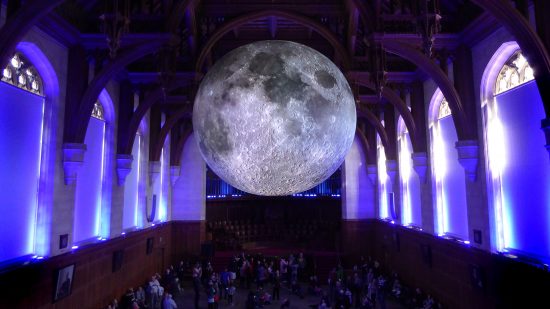
Speaking of notable dates, July 20th is the 50th anniversary of the Apollo 11 moon landing, and faked or not, it’s one of the late 20th century’s most significant historical events. There are a few exhibitions in Australia timed to coincide with the anniversary, but probably none are bigger than the Powerhouse Museum’s Apollo 11 exhibition. “Apollo 11 is a new exhibition exploring the defining moment in history when the first astronauts landed on the moon [and] will also explore the crucial role Australia played in transmitting the famous footage of the landing around the world.” Among the featured exhibits is [>] “Museum of the Moon, a seven metres in diameter, internally-lit artwork created by artist Luke Jerram. It combines detailed NASA imagery of the lunar surface with a sound installation by award winning composer Dan Jones. The Museum of the Moon is at an approximate scale of 1:500,000. Each centimetre represents 5km of the moon’s surface. Over 200 objects will be on display including archival pieces, scientific models and installations. Key objects include parts of the iconic CSIRO Parkes Radio Telescope, responsible for receiving some of the first images of the moonwalk and broadcasting over 2 hours around the world; parts of the Redstone Rocket that put the first American into space and a life-size replica of the Mercury Capsule”.
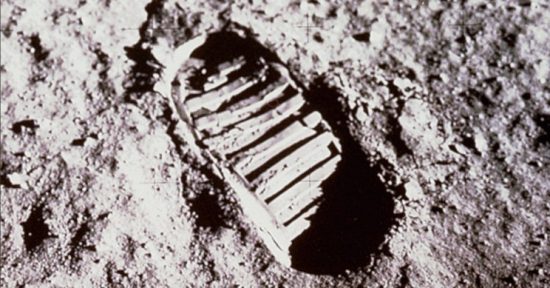
Not to be outdone, the Gippsland Art Gallery in Sale, Victoria is staging Space, an exhibition that combines photographic documentation of Apollo 11 with the work of Australian and international artists influenced and inspired by the event. Art Life editor Andrew Frost wrote for the exhibition catalogue [>] “For an event as monumental as the Apollo program and the 1969 moon landing itself there has been a long tail to its cultural influence. Traces of NASA modernism can be detected in numerous recent films, particularly Alfonso Cuaron’s big budget, star vehicle Gravitybut also in low budget pieces such as Europa Report[both 2013]. Meanwhile, the efforts of space tech billionaires Elon Musk’s SpaceX and Jeff Bezos’s Blue Origin, alongside NASA and the European Space Agency’s Orion program, suggest that the space age may only just beginning after all, not cancelled as many feared in the dark days of the mid-1970s. But what is most interesting of all is the way the cultural memory of Apollo plays out in the work of contemporary artists, not just in America, but also around the world, and as shown in this exhibition, here in Australia. Artists reenact and reinvigorate the will to exploration, reminding us once more that the thing that got us to space in the first place, was the link between scientific inquiry and the imagination.”
The Housing Question
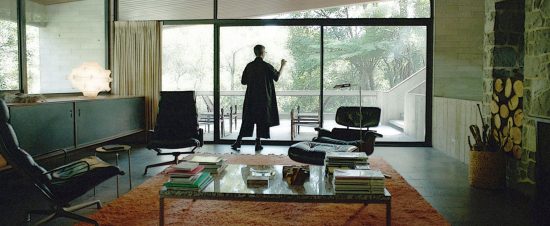
Friedrich Engels? Modernist architecture? Sound and video art? What’s not to love! The Housing Question at Penrith Regional Galleries is an extensive multi-art form exhibition by Helen Grace, Narelle Jubelin, with a contribution by sound artist Sherre DeLys, from June 22 to August 25, 2019. Guest-curated by Julie Ewington, and comprising of video, photography, sculpture and installation, the exhibition occupies the entire Gallery [>] “The Housing Question takes its title from Friedrich Engels’ seminal 1872 texts addressing the severe housing shortages in his native Germany. After nearly 150 years this question remains pressing today. What are basic human rights to secure and affordable housing? What are one’s rights to housing when one is displaced, as hundreds of thousands of people are today? The issues canvassed by The Housing Question are still central to contemporary social and political debates. Grace and Jubelin explore these linked issues in a major new 27-minute collaborative video, titled The Housing Question. They start with two exemplary modernist homes. Harry and Penelope Seidlers’ house in Sydney’s Killara (1967), and Casa Huarte (1966) in Madrid by José Antonio Corrales and Ramón Vásquez Molezún, are almost exactly contemporary statements in modernist architecture, made thousands of kilometres apart in markedly different nations and political circumstances. Yet despite their dissimilar contexts, the Australian and Spanish architects shared globally influential aspirations to assisting the creation of more equitable societies through the provision of excellent and widely available housing.”
Dead things
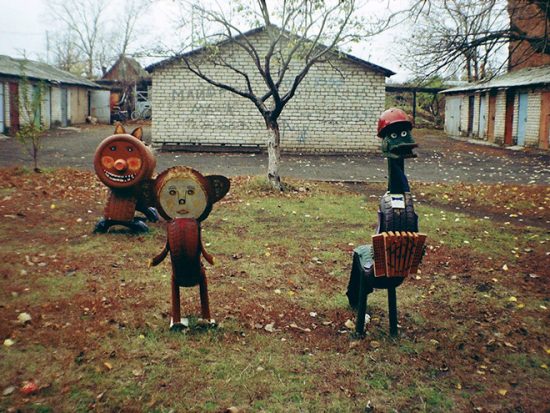

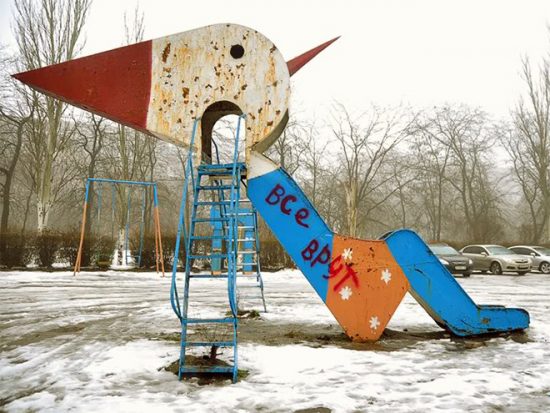
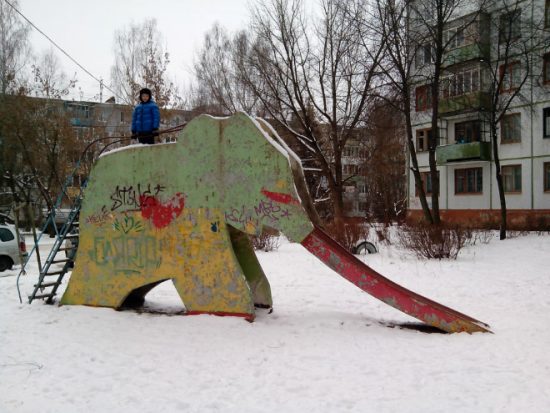
“You would usually expect to find an innocent set of monkey bars, a slide and a swing when taking your children to the local playground: not haunting sculptures of menacing monsters. But not in Russia, though…”
Assorted links
Red scarves, Magnum ice creams, brass bands: [>] Edmund Capon farewelled in style [Paywall]
“Meet Richard Bell, an activist and artist who challenges preconceived ideas about Aboriginal art. ‘I make art for other Aboriginal people’, says Bell. ‘I want [my art] to be empowering to them.’ [>] Richard Bell: My art is an act of protest
“Instead of ignoring their worst reviews on TripAdvisor, MONA plastered them on billboards in order to generate further interest in Hobart’s controversial private museum.” [>] What do you do with bad reviews? Celebrate them!
Belgian photographer Leonard Misonne (1870-1943) traveled throughout his homeland and beyond to capture the landscape and people of Europe in the Pictorialist style [>] When Photos Looked Like Paintings: Dreamy Landscape Photographs
Watch an animated version of Ridley Scott’s Blade Runner [>] made of 12,597 watercolour paintings
Zany and earnest, political yet puckish, Gilles Deleuze and Félix Guattari were philosophy’s most improbable duo: [>] Two’s A Crowd
This really sounds like the artist character in Hereditary: [>] Dioramas of death: cleaner recreates rooms where people died alone
Thom Yorke describes hours of recordings from OK Computer sessions as ‘not v interesting’, while climate activists thank the band for ‘unprecedented support’ [>] Radiohead release hours of hacked MiniDiscs to benefit Extinction Rebellion
And finally…
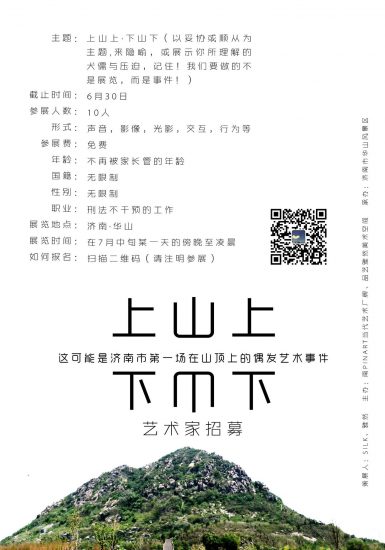
Want to exhibit on the top of a mountain? In China?
call for artists
Theme: Up Hill Down (Call for public art event, with theme about Compromise or Obedience. It aims to metaphor, or show your understanding of cynicism and oppression, Look! What we intend to do is not exhibition, but event!)
Deadline: 26th June
Number of Artist: 10 artists
Forms: Sounds, Videos, Interactions, Performances, etc
Applying fees: free
Age: Unlimited
Nationality: Unlimited
Gender: Unlimited
Site: top of Mountain Hua, jinan, China
Date of Art Event: around mid of July
How to apply: scanning Wechat QR code
Curator: Silk Su/ Yaran
Sponsor: Pin Art Jinan Modern Art/ Pinyiyaran Art Space
Address: Mountain Hua, jinan, China

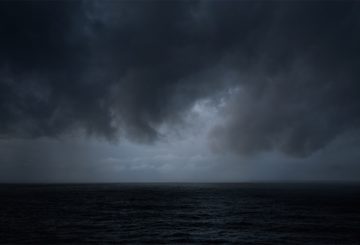
Pingback: Being reborn, Apollo 50th, hidden faces, working in Taswegia + more! – The Art Life